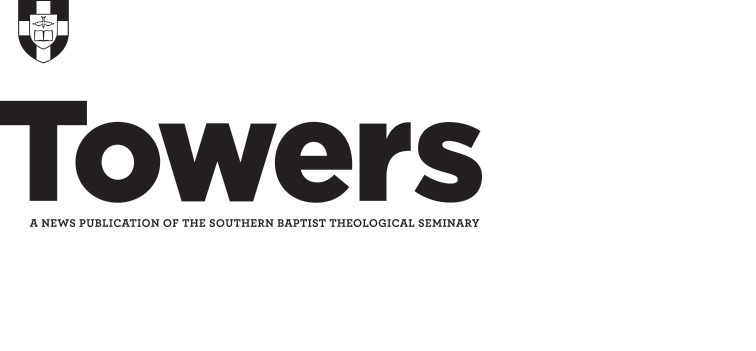The founding faculty of Southern Seminary demonstrated strong support for the Southern Baptist Foreign Mission Board (now International Mission Board). Basil Manly Jr. was very involved with the FMB in its first few decades, serving on the Board of Members and as a chairman of committees. James P. Boyce and John A. Broadus served as advisors to the FMB when it came to the appointment of former students.
Broadus’s support of foreign missions, however, is often overshadowed by the legacy of his daughter Eliza Broadus who served as a vice-president of the Woman’s Missionary Union, and founded the Lottie Moon Christmas Offering which continues to be the main financial support of thousands of IMB missionaries around the world.
Though it seems obvious that God worked through SBTS to further foreign missions, what did he do through these early students? A study of the IMB Board Minutes database reveals the high investment early Southern Seminary students placed in Southern Baptist foreign missions. ((www.imb.org/research-archives/ ))
One-fourth of the first graduating class demonstrated a heart for foreign missions through personal applications or administrative support. Unfortunately, as the American Civil War began, two of these missionary appointees were not sent for financial reasons while the third was not sent because of health issues.
The next SBTS student appointed in the post-War period came in May 1871. N. B. Williams, who finished studying that year, remained as a FMB missionary to China until November 1882. ((November 6, 1882 Minutes of the Foreign Mission Board.))
China and Africa were the first foreign fields of the FMB, but Italy was soon adopted. The first SBTS student appointed and sent to Rome was John H. Eager who had originally been appointed to join Lottie Moon’s team in Northern China. He received his appointment in August 1879. ((See August 4, 1879 minutes of the Foreign Mission Board on Eager’s original appointment. See July 5, 1880 minutes for the transfer of appointment to Italy. Also of interest may be the July 10, 1878 minutes.))
The 1880s proved to be very fruitful — sending more foreign laborers than in the previous decades, despite some difficulty.
In the spring and summer of 1881, two years after Crawford Toy’s resignation from SBTS due to heterodoxy, Boyce and Broadus insisted that the FMB re-evaluate the appointment of two of Toy’s former students. Once their doctrine was re-examined, it was decided that the two could not be sent by the Foreign Mission Board. The Corresponding Secretary charged Boyce with the task of finding two men to take their place. On November 19, 1881, the Board appointed and sent C. W. Pruitt and W. S. Walker to China in addition to another SBTS student, P. A. Eubank, to Africa. ((Wills, Gregory A., The Southern Baptist Theological Seminary 1859-2009, 144-145. On the concerns of T. P. Bell and John Stout see the April 20, June 6, and June 24, 1881 Minutes of the Foreign Mission Board. Pruitt, Walker, and Eubank were examined and appointed at the November 19, 1881 meeting as recorded by the minutes.))
Z.C. Taylor who had completed his studies at Southern in 1881, was appointed by the Board to Brazil in January 1882, where he served until September 1919. Appointed by the Board in May 1882, William D. Powell was sent to Mexico, where he served until June 1898. These two were the first SBTS students appointed to those fields.
In 1884, six SBTS students were appointed and sent by the FMB to China and Africa. The year of 1885 included the appointment and sending of four SBTS students, including Miss Cynthia Morris. Morris applied for appointment in 1882, but the Board requested that she seek theological instruction from the seminary. After participating in some seminary classes, she was eventually approved in December 1885 to sail to Africa in the company of newly appointed FMB missionaries to marry the widower SBTS alum Charles E. Smith, graduated and appointed in 1884. ((On her applications to be appointed by the board see the November 1882 minutes as well as the January 1883 minutes. On the recommendation that she attend SBTS for a time, see the February 5, 1883 minutes. For Smith’s appointment, see the March 20, 1884 minutes. Concerning the FMB’s take on Miss Morris’s travel to Africa to marry Smith see the December 7, 1885 minutes. For more, albeit brief information on the Smith-Morris marital commitment see page 7 of Charles Edwin Smith: A Visionary Missionary by Isaiah O. Olatoyan found Here.))
The next two years, 1886 and 1887 produced only one FMB-appointed and sent SBTS student, David A. Wilson. This is a contrast to 1888, however, when eleven young men finishing studies at Southern were appointed and sent to Mexico, Brazil, Japan, China, and Africa.
John A. Brunson was the first SBTS student appointed and sent to Japan. Many of these men served relatively long terms; others died on the field. T.C. Britton, for example served in China for forty-five years. The following years of the decade saw another six SBTS students appointed and sent by the FMB.
During the 1890s, another 29 SBTS students were appointed and sent by the Foreign Mission Board.
These men and their families provided reinforcements to laborers already on the field and were vital for laying ground work for succeeding missionaries, many of whom have studied at Southern.
Any historical record of the founders of the Southern Baptist Convention, and The Southern Baptist Theological Seminary, is incomplete without an honest telling of their complicity in American slavery and racism. For more on that story, read here.




